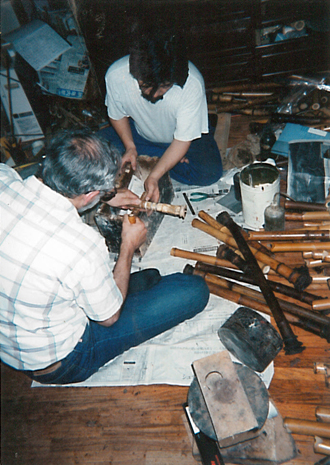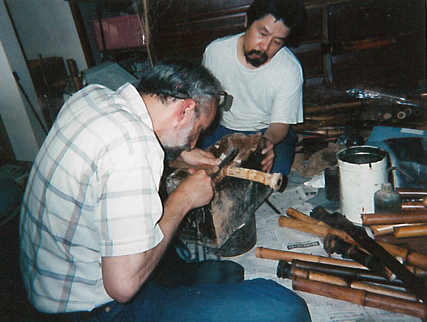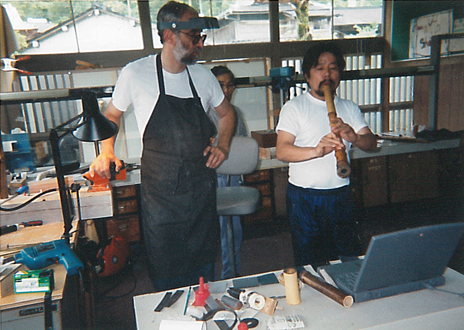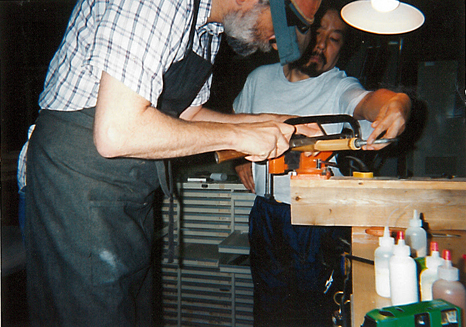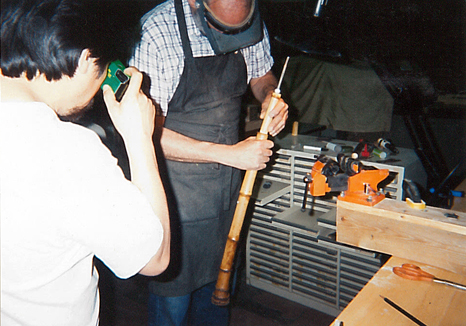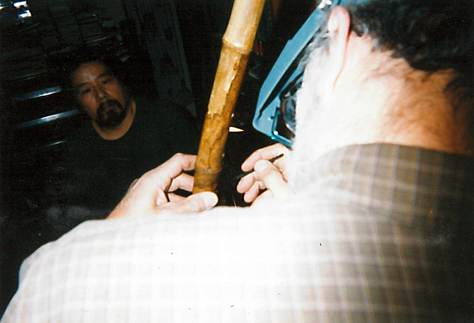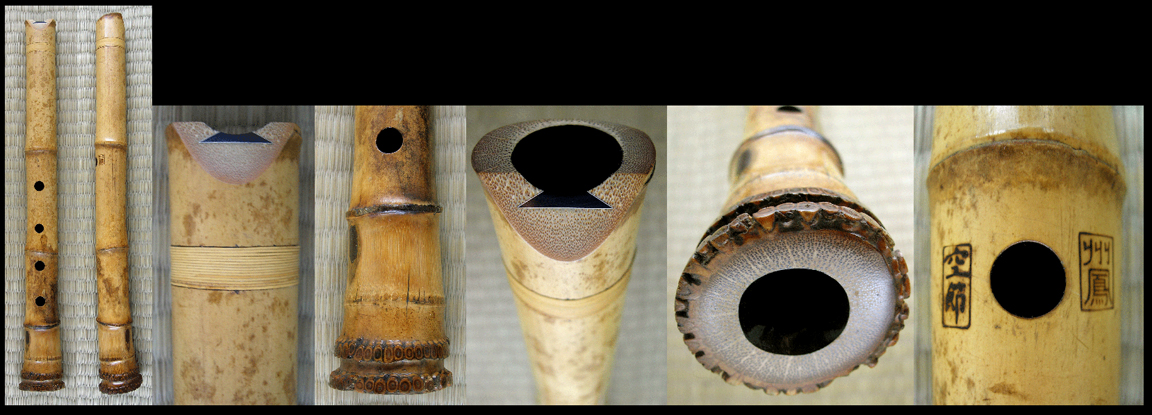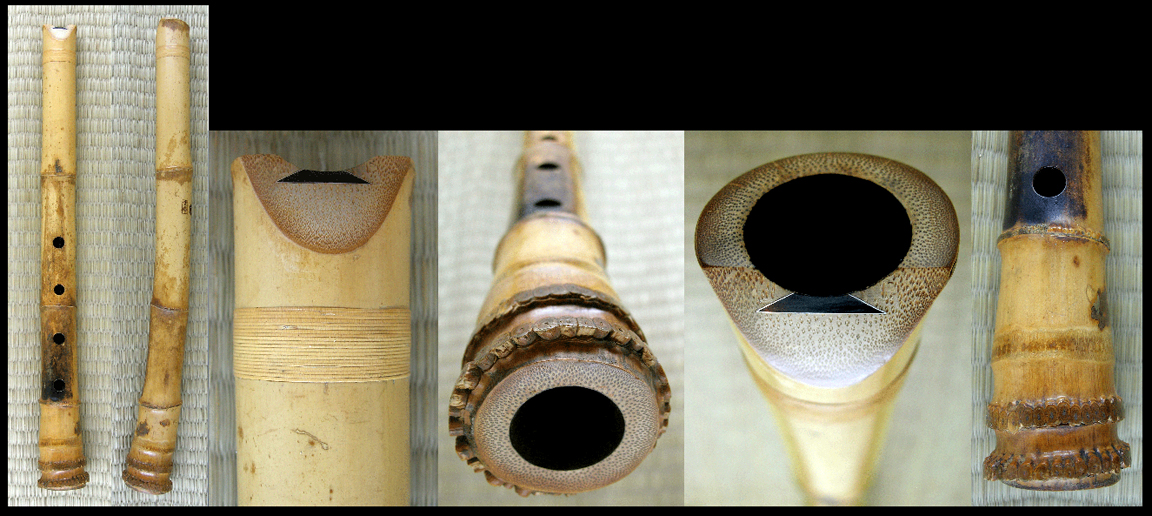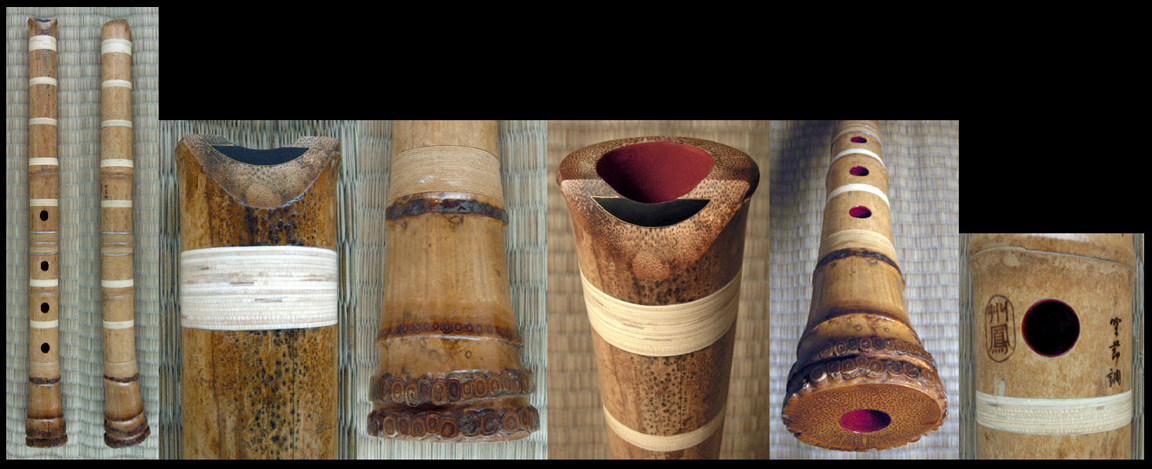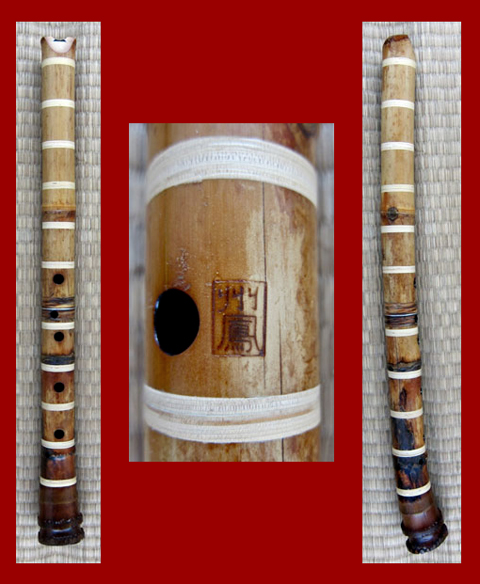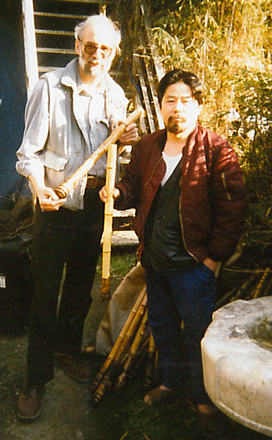 |
East Meets West My Collaboration with Master Shakuhachi Maker Masuda Shuho
In 1998, I was introduced to Masuda Shuho, a master craftsman in Japan who worked very closely with John Kaizan Neptune. Soon thereafter I agreed to teach Masuda the Precision Cast Bore technology and retrofitted his workshop in Kawasaki for making shakuhachi using this method. We collaborated until Masuda's untimely passing in 2001. |
At Masuda's workshop in Kawasaki outside of Tokyo. |
I carried with me to Japan all of the tooling required to make shakuhachi using the Precision Cast Bore technology and set up the work stations in Masuda's shop. At the time, I didn't speak much Japanese, and Masuda not a word of English. However, it wasn't much of a problem. We were both fluent in shakuhachi. |
At my workshop in the small village of Kitagawa (Tokushima Prefecture) on Shikoku Island. Blowing shakuhachi to check intonation using one of the very first Apple laptop computers. It was definitely a mind-blowing experience to check pitch in this way. My father-in-law, Akiyuki Kaname, in the background kept a close eye on the process. |
= Building a jig for Masuda used to make crescent moon inserts from madaké bamboo for resizing the top opening of the flute. |
Back in those days, the smart phone was a long way away from conception. |
Lacquering the finger holes of a nearly-completed 1.8'. |
A 1.4' and 1.5' originally made as a gauges for Masuda to replicate other shakuhachi of these sizes. These gauge flutes are the only ones that are stamped with both our hanko.
A 1.8' Tozan-ryu shakuhachi I originally made by Masuda that I restored and enhanced.
|
|
An unfinished 1.8' 7-Hole Shakuhachi I completed after Masuda's passing in 2001. |
|
